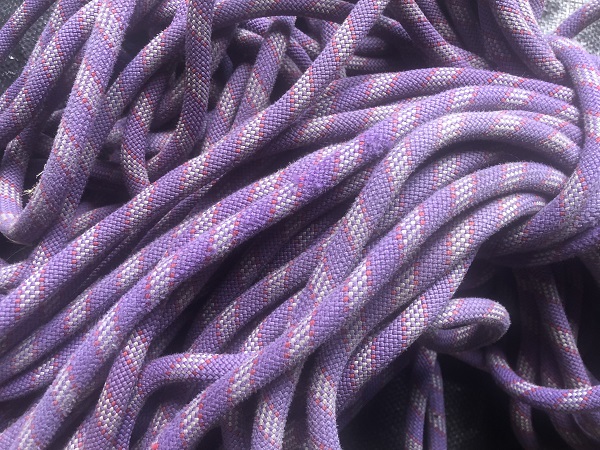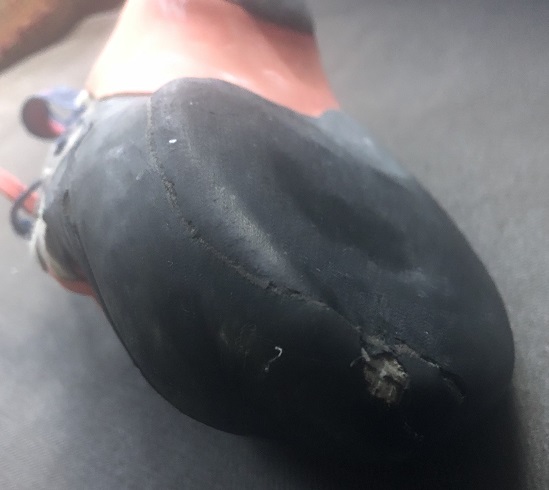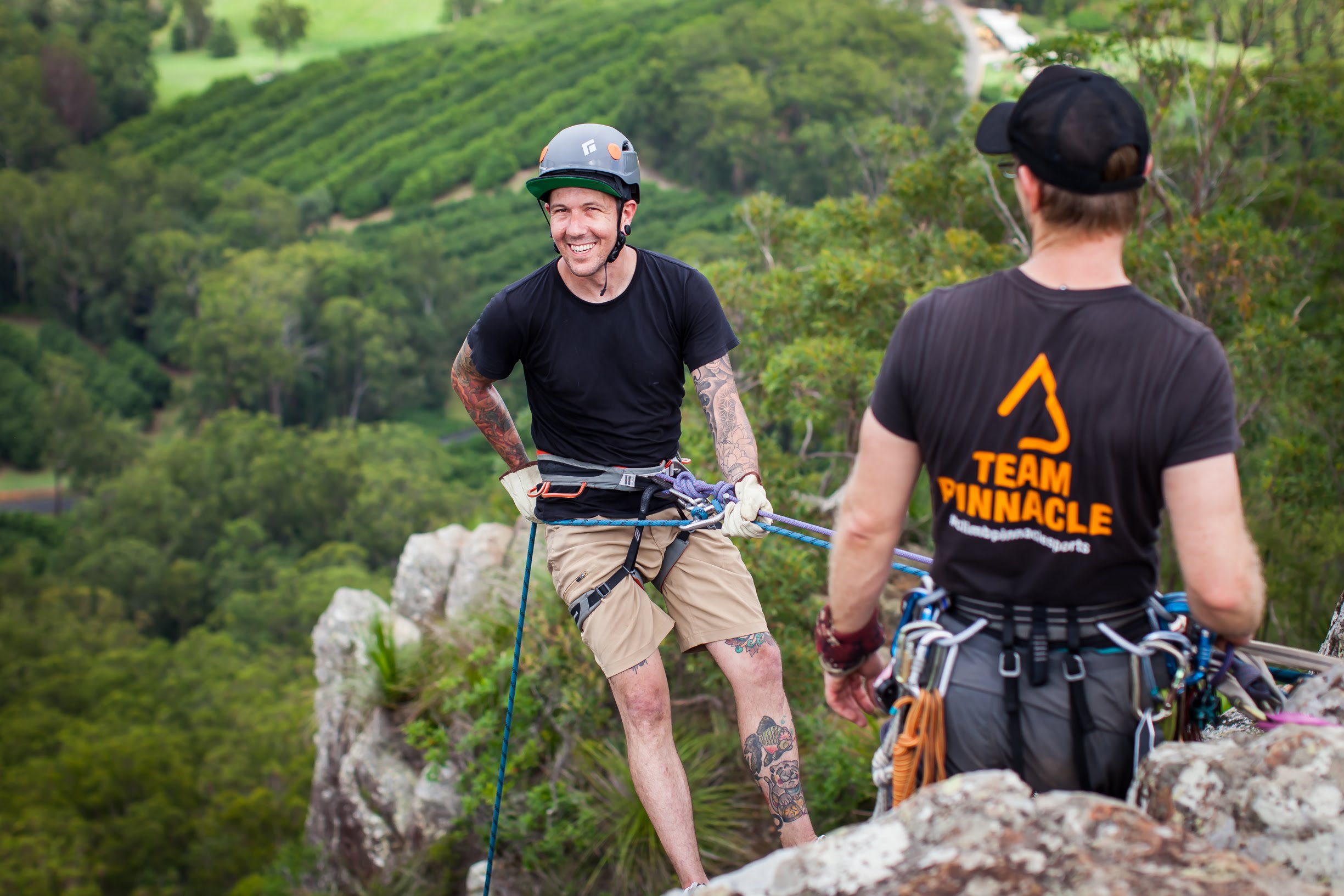written by Pinnacle Ambassador Ryan Siacci
So friends, how’s life inside the bunker? Have you gotten to the end of Netflix yet? Are you feeling fatigued from Vitamin D deficiency? Are you already desensitised to the soft wooden caress of your new hangboard and aching for the exfoliative properties of real stone?
Of course you are. We all are.
Believe it or not, this whole quarantine thing will lift one day. When that happens, we’ll all be hitting the crags like Julie Andrews skipping across an Austrian meadow in The Sound of Music. Sadly, that time is not now, but that doesn’t mean you have to waste it.
You know all those climbing-related chores you always said you’d do, but never got around to? Well, you can’t say you’ve got no time for them now. Here’s a few productive things you can do to make sure you’re crag-ready the millisecond restrictions are lifted:
Wash your rope
If you’re anything like me, your rope is filthy like an old shoe. What was once a resplendent red is now a dull brown and the fibres are interwoven with several types of crag dirt and the acidic mank of climber sweat. Be kind to your rope and it will be kind to you.
How to do it
- Avail yourself of some commercial rope wash. We stock Tendon, Beal and Skylotec varieties. They’re all much of a muchness in terms of function and price per litre, so pick whichever one speaks to you. Check them all out here.
- Get a big tub and fill it with warm water. Add the amount rope wash specified by the manufacturer recommendations.
- Massage vigorously.
- Rinse the rope out with clean water.
- Repeat previous three steps if necessary.
- Daisy chain your rope and hang out to dry, ideally inside and away from UV light.
- Some sources discourage using a washing machine, others recommend it. I’ve personally never had bad results using a washing machine, but I recommend a front loader which doesn’t have the internal spindle around which the rope can possibly get caught.
- If you do choose to use a washing machine, daisy chain the rope before placing in the machine.

This rope is too old for use in climbing but a good wash could make it a very presentable rope mat!
Clean your cams
Cleaning your cams is like changing your bedsheets – you only do it once a year, but it’s really nice once it’s done. Wait, you change your bedsheets more often than that? Wow. Good on you!
How to do it
- You’ll need a bucket or a pot of water, some detergent, a brush and some cam lube.
- We’ve got Metolius Cam Lube available but you can also find dry lube at hardware stores, auto stores or bike shops.
- Fill the bucket/pot with warm water. Some folks recommend using boiling water, but I found it to be more effort than it’s worth. Add a wee bit of detergent.
- Brush all the obvious dirt out of the springs and working parts of the cams.
- Submerge the cam in water and pull the trigger repeatedly.
- Repeat previous two steps until clean as a whistle.
- Hang the cams up to dry thoroughly. Why not take the time to inspect the slings as well?
- Once the cams are fully dry, apply the lubricant to the moving parts of the cam. Try not to use too much and be careful to avoid getting any lube on the slings. Wipe off any excess lube once done.
Resole your shoes
Rejoice! This is the first item on this list where you really don’t have to do anything at all. You’ll just send the shoes away and let someone else deal with the stank. There is really no better time to send your shoes away than right now.
How to do it
- There are a few folks around the country who can provide this service for you. Arapiles Resoles and Big John Retreads both do a great job.
- Here at Pinnacle, we like to stay local, so we recommend Scotty Dog Resoles. If you bring your shoes in store, we’ll ship ‘em off for you or you can send them direct. Find out more at http://www.scottydog.com.au/

Get these shoes to a surgeon, stat!
Mark your gear
Got yourself a nice double rack of BD Camalots? That’s wonderful, but do you know who else does? EVERYONE!
How to do it
- For the love of god, don’t use tape to mark your gear. Before long it will wear off, leaving trash at the crag and a sticky residue on your gear. Thumbs down.
- Instead, find yourself the fugliest colour of nail polish you can purchase and paint an inconspicuous spot on your gear. You can also use enamel paint, but it’s more expensive.
- For carabiners, I paint along the side where the strength ratings are stamped. When the nail polish wears off, it still stays in the indents created by the numbers.
- For cams, I paint on the top of the axle. Some people paint inside the lobe cut-outs, but that doesn’t work for small cams.
- Engraving is a permanent solution that some folks use, however there is heated debate over whether this is a safe choice. I haven’t used this method personally, but I don’t think a few shallow scratches are going to cause your demise. That said, use at your discretion.
Patch your clothes
I know it’s ultimate Dirtbag Chic to rock a puffy with the innards spewing out and pants with more holes than fabric, but here’s a fact – it doesn’t actually help you send harder. You can easily eke another few years of life out of some of your favourite climbing threads with some preventative maintenance. A stitch in time and all that guff.
How to do it
- I gotta be honest with you here - all my sewing jobs get handed off to my lovely girlfriend, who is a talented seamstress among other things.
- If you don’t have such resources, it’s time to learn how to sew. For most jobs, hand stitching will suffice, but you’ll need some spare fabric to make patches.
- If you REALLY can’t be bothered, I recommend Tenacious Tape. It’s a far better option than duct tape and literally lasts for years. It’s even available in different sizes!

Photo, jacket, and repair job courtesy of Kevin Heinrich
Start a gear log
Pop quiz, hot shots! How old is your rope? How many whippers have you taken on it? When should you retire it? What is the airspeed velocity of an unladen swallow? If you can’t answer any of these with even a remote degree of certainty, a gear log can help! I wouldn’t claim it’s to be a total game-changer, but it’s certainly useful.
How to do it
- It’s as easy as just doing it. Just use an app like GearLog, start an excel spreadsheet or (gasp) use a notebook like the olden days.
- You can go really basic or you can totally nerd out, but it’s worth recording date of purchase, maintenance, major whippers etc.
- We all check our gear on the fly, but it’s a good idea to do a full detailed inspection at least once a year. Do it during a rain day or, I dunno, a mandatory quarantine.
- This sort of procedure is useful for ropes and draws, but it’s even handier for tracking smaller items like PAS’s, slings, anchor cords etc which sometimes escape our attention.









